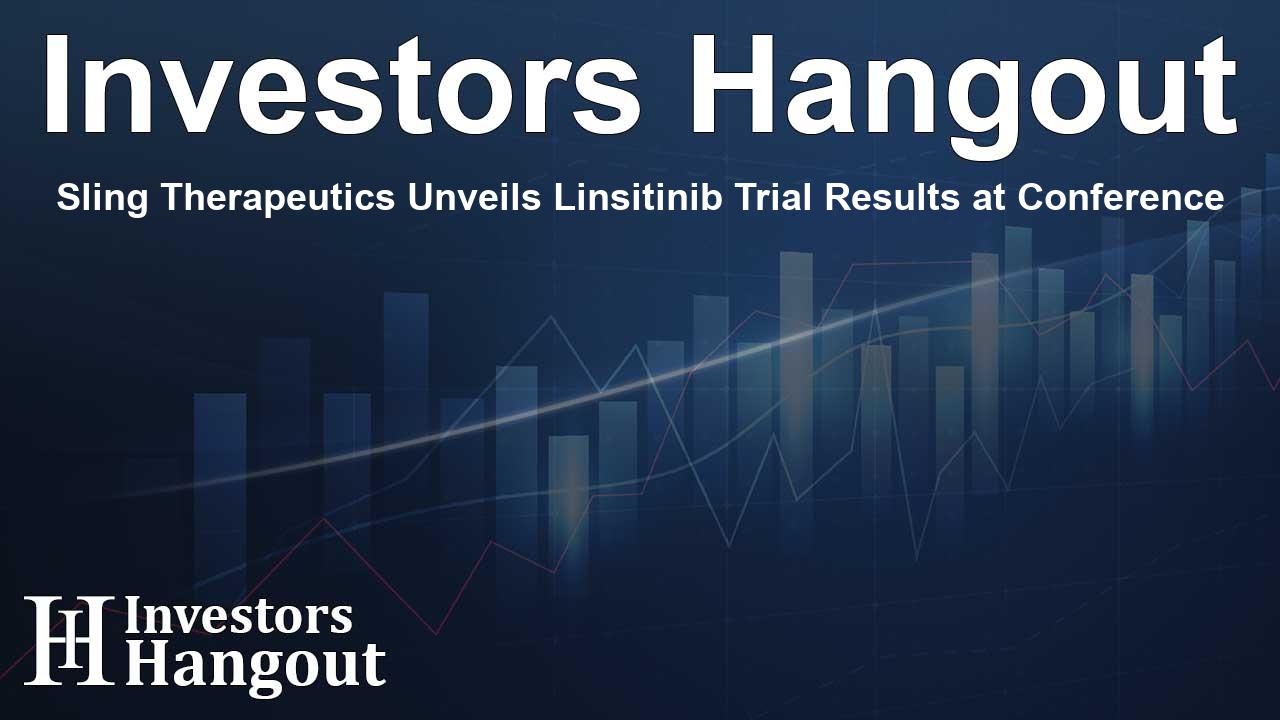Sling Therapeutics Unveils Linsitinib Trial Results at Conference

Sling Therapeutics to Present Promising Results from Linsitinib Trial
Sling Therapeutics, Inc., a late-stage biopharmaceutical company, is gearing up to announce significant topline results from its Phase 2b/3 clinical trial utilizing linsitinib for patients suffering from thyroid eye disease (TED). This announcement is set to take place at the prestigious 43rd Annual J.P. Morgan Healthcare Conference, where key insights about the study will be shared.
Overview of the Phase 2b/3 LIDS Trial
The LIDS clinical trial focuses on evaluating the efficacy of linsitinib in patients who are experiencing moderate to severe active TED, a rare and progressive autoimmune disorder that can severely affect vision. As the trial unfolds, Dr. Raymond Douglas, the Chief Scientific Officer of Sling Therapeutics, will elaborate on the company's initiatives and the outcomes of this important study. His presentation is scheduled for a prime slot on the first day of the conference, capturing the attention of professionals across the healthcare spectrum.
Understanding Linsitinib and Its Mechanism
Linsitinib is an oral small molecule that patients typically take twice a day. Its therapeutic action hinges upon inhibiting the IGF-1R target, a critical pathway involved in the disease process of TED. By blocking this target, linsitinib aims to mitigate the inflammation and proptosis associated with the condition. Each dose works efficiently thanks to its short half-life, providing constant support to patients in managing their symptoms. With over 900 patients having participated across fifteen clinical trials, linsitinib has demonstrated a solid safety profile, bolstering expectations for its role in TED treatment.
What is Thyroid Eye Disease?
Thyroid Eye Disease poses serious challenges for those affected. It is a rare autoimmune condition primarily linked with Graves’ disease, impacting the lives of approximately 70,000 individuals in the U.S. and a similar number in Europe. The underlying issue stems from the dysfunctional signaling pathways that lead to an accumulation of fibrous tissue behind the eyes, manifesting as bulging eyes, swelling, and various degrees of vision impairment. The relentless progression of TED can substantially decrease life quality, highlighting the urgent need for effective treatments. Given the current treatment landscape that often leans towards surgical intervention or infusions, linsitinib represents a potential breakthrough by offering a non-invasive alternative.
About Sling Therapeutics
Sling Therapeutics, Inc., continues to focus its efforts on developing effective oral therapies aimed at enhancing the lives of those impacted by thyroid eye disease. The company’s pioneering compound, linsitinib, is pushing the boundaries of treatment possibilities, poised to enter its confirmatory Phase 3 trial by mid-2025. Through extensive research and development, Sling Therapeutics aspires to alleviate the treatment burden on patients while promoting more straightforward management procedures for healthcare providers.
Investor Relations and Communication
For any inquiries, investors and media can contact Argot Partners. They are ready to assist with any further information or questions about Sling Therapeutics’ recent developments and future directions. As the company progresses towards its goals, it remains committed to transparency and investor engagement.
Frequently Asked Questions
What is the upcoming event for Sling Therapeutics?
Sling Therapeutics will present results from its Phase 2b/3 LIDS trial at the 43rd Annual J.P. Morgan Healthcare Conference.
What condition is linsitinib targeting?
Linsitinib is designed for the treatment of thyroid eye disease (TED), a serious autoimmune condition.
How does linsitinib work?
Linsitinib works by inhibiting the IGF-1R target, which reduces inflammation associated with TED.
What is the safety profile of linsitinib?
Linsitinib has proven to have a strong safety profile based on data from over 900 patients in various trials.
What are the main symptoms of thyroid eye disease?
Main symptoms include bulging eyes, swelling, pain, and potential vision impairment, dramatically affecting quality of life.
About The Author
Contact Thomas Cooper privately here. Or send an email with ATTN: Thomas Cooper as the subject to contact@investorshangout.com.
About Investors Hangout
Investors Hangout is a leading online stock forum for financial discussion and learning, offering a wide range of free tools and resources. It draws in traders of all levels, who exchange market knowledge, investigate trading tactics, and keep an eye on industry developments in real time. Featuring financial articles, stock message boards, quotes, charts, company profiles, and live news updates. Through cooperative learning and a wealth of informational resources, it helps users from novices creating their first portfolios to experts honing their techniques. Join Investors Hangout today: https://investorshangout.com/
The content of this article is based on factual, publicly available information and does not represent legal, financial, or investment advice. Investors Hangout does not offer financial advice, and the author is not a licensed financial advisor. Consult a qualified advisor before making any financial or investment decisions based on this article. This article should not be considered advice to purchase, sell, or hold any securities or other investments. If any of the material provided here is inaccurate, please contact us for corrections.
